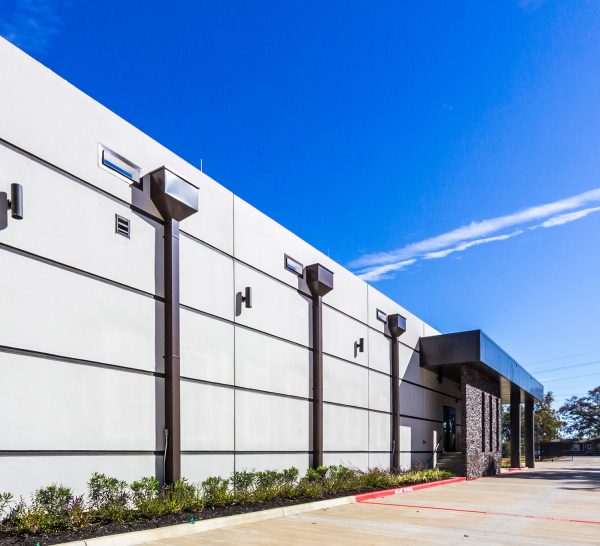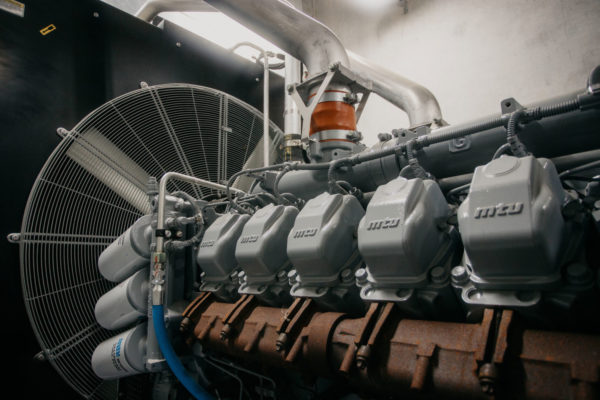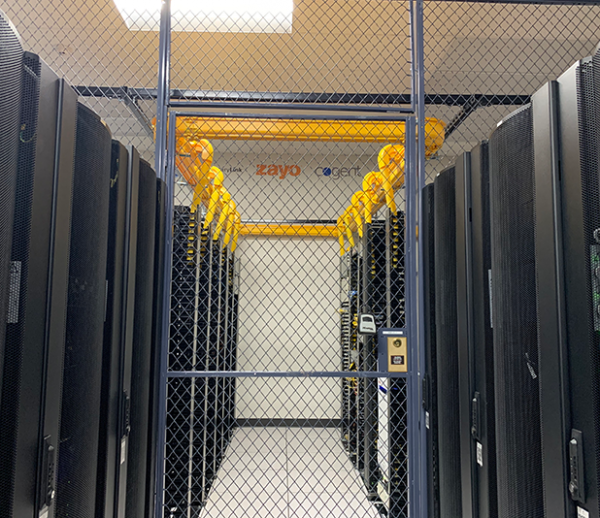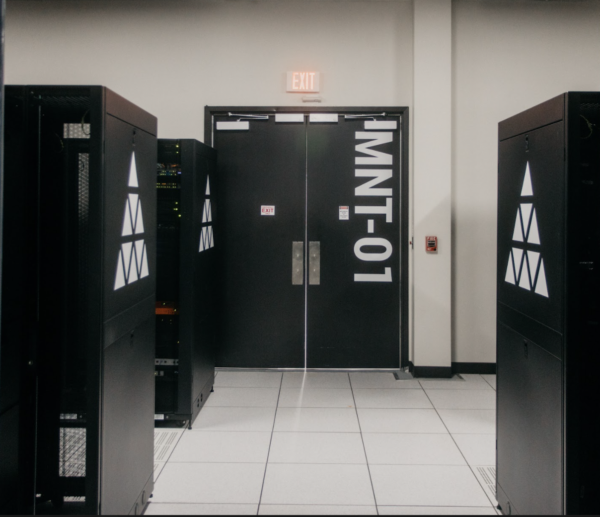In today’s rapidly evolving digital landscape, the complexity and scale of data centers are pushing organizations to seek more efficient, reliable, and cost-effective ways of managing their IT infrastructure.
Automation has emerged as a cornerstone strategy, enabling data center operators to handle exponential growth and ensure agility, security, and operational excellence.
To guide your automation journey, we’ll break down these best practices into strategic, operational, and technical considerations.
What is Data Center Automation?
Data center automation refers to the use of software and technology-driven solutions to perform routine, repetitive tasks within a data center environment, without continuous human intervention.
Traditional data centers relied heavily on manual processes, system admins or engineers physically provisioning servers, configuring network equipment, or patching software.
As data centers expanded in size and complexity, these manual approaches became slow, costly, and error-prone.
Key Characteristics of Data Center Automation
- Repeatability: Automated processes are executed the same way each time, ensuring consistent outcomes and reducing variability.
- Scalability: As demand grows, automation platforms can easily scale up, provisioning additional resources or adjusting workflows without overextending the operations team.
- Efficiency: Tasks that previously took hours or days can often be completed in minutes, lowering operational costs and freeing personnel for value-added projects.
- Integration: Automated solutions can integrate seamlessly with monitoring, analytics, security, and orchestration tools, providing a holistic approach to managing complex IT ecosystems.
Automation extends beyond traditional operational gains for organizations that partner with advanced colocation services.
It offers a blueprint for future-proofing data center operations, ensuring that the infrastructure remains adaptable, secure, and high-performing even as requirements evolve.
Understanding the Value of Automation
Before delving into the details, it’s crucial to understand why data center automation has become an essential strategy for driving operational excellence, scalability, and reliability.
Embracing the Era of Intelligent Infrastructure
In the past, manual processes often plagued data center operations.
Teams spent inordinate amounts of time handling routine tasks, troubleshooting repetitive issues, and responding to operational incidents. This led to inefficiencies, mounting labor costs, and an increased risk of human error.
Automation introduces intelligent infrastructure management tools and scripts that execute tasks with consistency and speed.
The result is improved operational excellence, enabling your team to focus on strategic initiatives like capacity planning, cost optimization, and application performance tuning.
Aligning Automation with Business Goals
Before deploying automated workflows, aligning automation initiatives with the broader business objectives is essential.
Are you looking to improve uptime, reduce operational costs, or increase agility? Consider how automation can support growth, compliance, and long-term sustainability.
For instance, if your data center is part of a multi-cloud strategy, automating provisioning and scaling can accelerate deployment times and improve service quality.
Aligning these tactical moves with strategic goals ensures that automation delivers tangible value rather than just solving short-term pain points.
Strategic Best Practices for Data Center Automation
By starting with a strong foundation and well-defined goals, strategic best practices set the stage for a successful automation initiative that aligns with broader business objectives.
1. Start with a Strong Foundation
Begin by conducting a comprehensive audit of your existing IT infrastructure.
Determine which components, servers, storage systems, and network devices can benefit the most from automation. Identify legacy systems that require modernization to integrate seamlessly with automated workflows.
Many organizations turn to specialized colocation providers and consultants to accelerate automation adoption. By partnering with a trusted data center provider, you can leverage their expertise and infrastructure to streamline deployment and scaling.
2. Develop a Clear Automation Roadmap
Not all processes lend themselves equally well to automation. Start with high-impact, repetitive tasks that are time-consuming and prone to human error.
Consider automating server provisioning, patch management, capacity planning, and load balancing before tackling more complex processes like disaster recovery runbooks.
Create milestones and Key Performance Indicators (KPIs) to track your progress. For example, measure the reduction in the mean time to repair (MTTR), the decrease in manual intervention for routine tasks, or the improvement in Service-Level Agreement (SLA) compliance.
Regularly reviewing these metrics allows you to adjust your strategy and ensure continuous improvement.
3. Prioritize Security and Compliance
Automation doesn’t mean sacrificing security. It can enhance it. By automating patching, vulnerability scans, and configuration checks, you reduce the exposure window to threats and ensure that all systems remain compliant.
As data privacy and protection regulations become increasingly stringent, automated compliance checks can ensure that your data center meets relevant standards, be they HIPAA, PCI-DSS, or GDPR.
Automating compliance reporting reduces manual overhead and minimizes the risk of human oversight that could lead to costly non-compliance penalties.
Operational Best Practices for Data Center Automation
Applying operational best practices helps ensure that day-to-day workflows, from provisioning to monitoring, run smoothly and efficiently under automation.
1. Standardize Configurations and Infrastructure as Code (IaC)
One of the cardinal rules of automation is standardization. Ensure that configurations, network settings, server builds, or application deployments are consistent. Standardization reduces complexity, making it easier to apply automation across the board.
You can version-control your entire environment by embracing Infrastructure as Code (IaC) tools like Terraform, Ansible, or Puppet. This approach lets you treat your data center infrastructure like software code, enabling rapid provisioning, rollback, and recovery.
2. Focus on Integration and Interoperability
Automation tools are abundant, from network configuration management solutions to application deployment pipelines. The challenge lies in ensuring they all work together seamlessly.
Invest in open APIs and integration frameworks that allow different tools to communicate and share data. This integrated ecosystem prevents fragmentation and ensures smooth end-to-end workflows.
To gain maximum value from automation, you must have deep visibility into your processes. Employ robust monitoring, observability, and logging solutions that track metrics, resource consumption, and event logs.
Automated alerts and predictive analytics can help you identify bottlenecks and vulnerabilities before they impact operations.
3. Leverage Artificial Intelligence (AI) and Machine Learning (ML)
AI and ML can elevate automation to a new level. Predictive analytics tools can forecast capacity requirements, helping you proactively allocate resources.
Intelligent anomaly detection can identify unusual network traffic or storage spikes, triggering automated responses that prevent outages.
Consider AI-driven orchestration systems that dynamically optimize workloads across on-premises and cloud environments. These systems ensure that your data center runs efficiently at all times, saving costs and improving performance.
Technical Best Practices for Data Center Automation
Technical best practices focus on choosing the right tools, frameworks, and methodologies. This will allow you to create a resilient and secure automated environment.
1. Choosing the Right Tools and Platforms
Opt for vendor-neutral automation tools. Proprietary solutions can introduce vendor lock-in and limit future scaling or integrations.
There is a diverse ecosystem of open-source and commercial tools, so select those that best align with your existing tech stack and strategic goals.
Ensure that your chosen automation platforms can scale seamlessly as your environment grows. High availability and fault tolerance are critical. Automation systems must continue functioning even if a component fails, guaranteeing continuous operations and SLA adherence.
2. Implementing Robust Version Control and Testing
Leverage Git-based workflows to manage and version-control your automation scripts, configuration files, and orchestration templates.
GitOps encourages collaboration, peer review, and rollback capabilities, making your infrastructure both agile and resilient.
Don’t assume that automation is a one-and-done task. Rigorously test your automated processes. Emulate various failure scenarios, such as a network outage or a storage subsystem malfunction, and ensure that your automation gracefully handles these situations.
Implement continuous integration and continuous deployment (CI/CD) pipelines to maintain code quality and quickly propagate updates across the environment.
3. Integrating with Hybrid and Multi-Cloud Architectures
Modern data centers rarely operate in isolation. They’re often part of complex hybrid and multi-cloud data center architectures.
Automation tools should abstract underlying infrastructure differences, enabling consistent deployment and management across on-premises data centers, colocation facilities, and public cloud providers.
Consider data center providers that offer direct cloud connectivity. For example, TRG Datacenters can help facilitate reliable, low-latency connections to major cloud platforms.
Organizational and Cultural Considerations
Beyond technical execution, cultural readiness and transparent communication are pivotal to embracing and sustaining automation initiatives you should consider.
1. Upskilling Your Workforce
Automation is as much a people challenge as it is a technical one. Invest in training programs and certifications for your IT staff.
Skilled engineers who understand scripting languages, orchestration tools, and IaC principles are invaluable assets. Encourage them to experiment with new tools and stay updated with industry trends.
Break down silos by creating cross-functional teams that include IT operations, network administrators, storage engineers, and developers.
These teams can collaboratively design, implement, and refine automated processes. Automation initiatives run more smoothly when everyone shares the same vision and goals.
2. Change Management and Communication
Introducing automation can raise concerns about job security and changes in daily workflows.
Communicate openly with your team about the purpose of automation, its role isn’t to replace them but rather to free them from mundane tasks and empower them to focus on innovation and value-added activities.
Instead of trying to automate everything at once, start with pilot projects or single automation workflows. Demonstrate quick wins and tangible benefits to gain buy-in from stakeholders.
As teams see the positive impact on productivity and reliability, they become more receptive to scaling these initiatives.
Continuous Improvement and Future-Proofing
Automation is never truly finished, especially with ongoing refinement, auditing, and staying abreast of evolving industry trends. This is why it’s necessary to maintain long-term success.
1. Regular Audits and Updates
Automation isn’t static. Your tools, processes, and technologies will evolve over time.
Conduct periodic audits of your automation workflows to identify inefficiencies, deprecated tools, or new requirements. This ongoing refinement ensures that your automation environment remains robust and future-proof.
The data center landscape is dynamic, influenced by emerging technologies like edge computing, distributed cloud, and AI-driven resource management. Stay ahead of the curve by monitoring industry trends and incorporating new tools or techniques as they mature.
2. Scalability and Elasticity
As your organization grows, so will your data center demands. Automation must be scalable enough to handle increased workloads, new applications, and a broader geographical footprint.
Cloud bursting dynamically offloading workloads to public clouds and workload scheduling tools can help maintain performance and cost optimization in a rapidly expanding environment.
Automation should also extend to scalability, automating the addition and removal of resources based on real-time demand. Elastic provisioning ensures you only pay for what you need, reducing operational expenses and aligning with modern consumption-based models.
Get More Advice on Data Center Automation
Data center automation is no longer a luxury; it’s necessary for organizations looking to remain competitive in an increasingly digital world.
With guidance from industry experts and reputable providers like ourselves, you can confidently adopt automation and position your data center as a driver of innovation and a hallmark of resilience for years to come.
Contact us today for more information.
Looking for colocation?
For an unparalleled colocation experience, trust our expert team with three generations of experience







